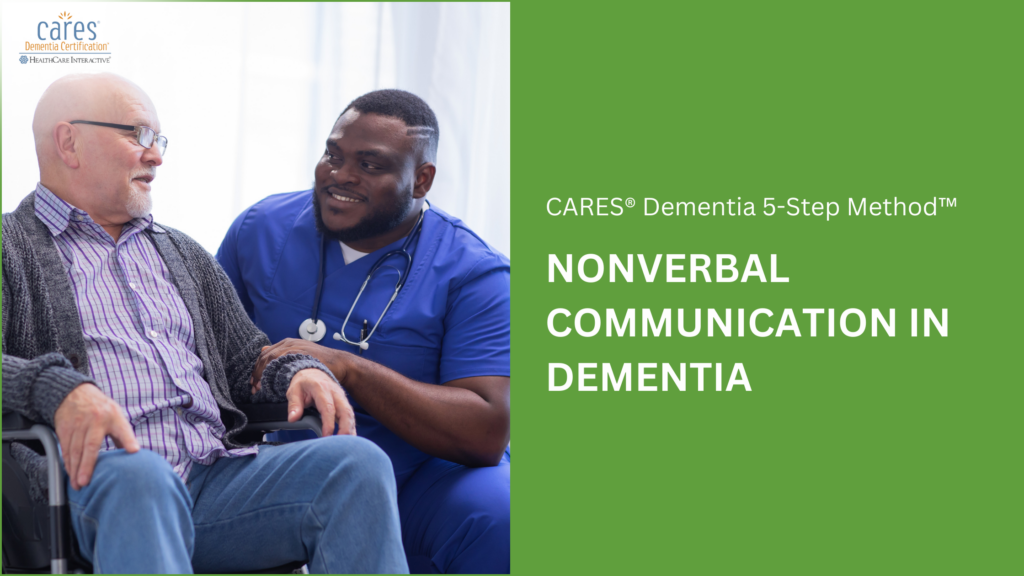Understanding non-verbal communication is essential when working with people living with dementia. Nonverbal communication refers to how we use body language, facial expressions, gestures, tone of voice, and movement to convey messages without using words. For individuals with dementia, these nonverbal cues become vital for effective communication and understanding. Below are some common nonverbal cues you might see in people living with dementia.
Common Nonverbal Cues in Dementia
• Facial expressions: Smiles, frowns, or a furrowed brow can indicate emotions like happiness, confusion, or discomfort.
• Body language: Restlessness, crossed arms, or a relaxed posture can reveal a person’s mood or state of mind.
• Gestures: Pointing, waving, or other hand movements may convey needs or intentions.
• Vocalizations: Changes in pitch, tone, or volume can express emotions, even if words are unclear.
• Eye contact: Direct or averted gazes might reflect engagement, fear, or disinterest.
Responding to Nonverbal Cues
Caregivers should take time to observe and interpret these nonverbal signals, as they can offer valuable insights into the person’s needs and feelings. By responding with empathy and adjusting the approach—whether through a comforting tone, gentle touch, or calming gestures—you can build a stronger connection and ensure they feel understood and supported. This is an important aspect of learning how to communicate with dementia patients effectively.
Would you like to earn your certification in CARES® Dementia 5-Step Method?
Start now and gain access to Module 1 for free at www.hcinteractive.com/5StepDemo.
Don’t miss out—this limited-time offer is available now!

